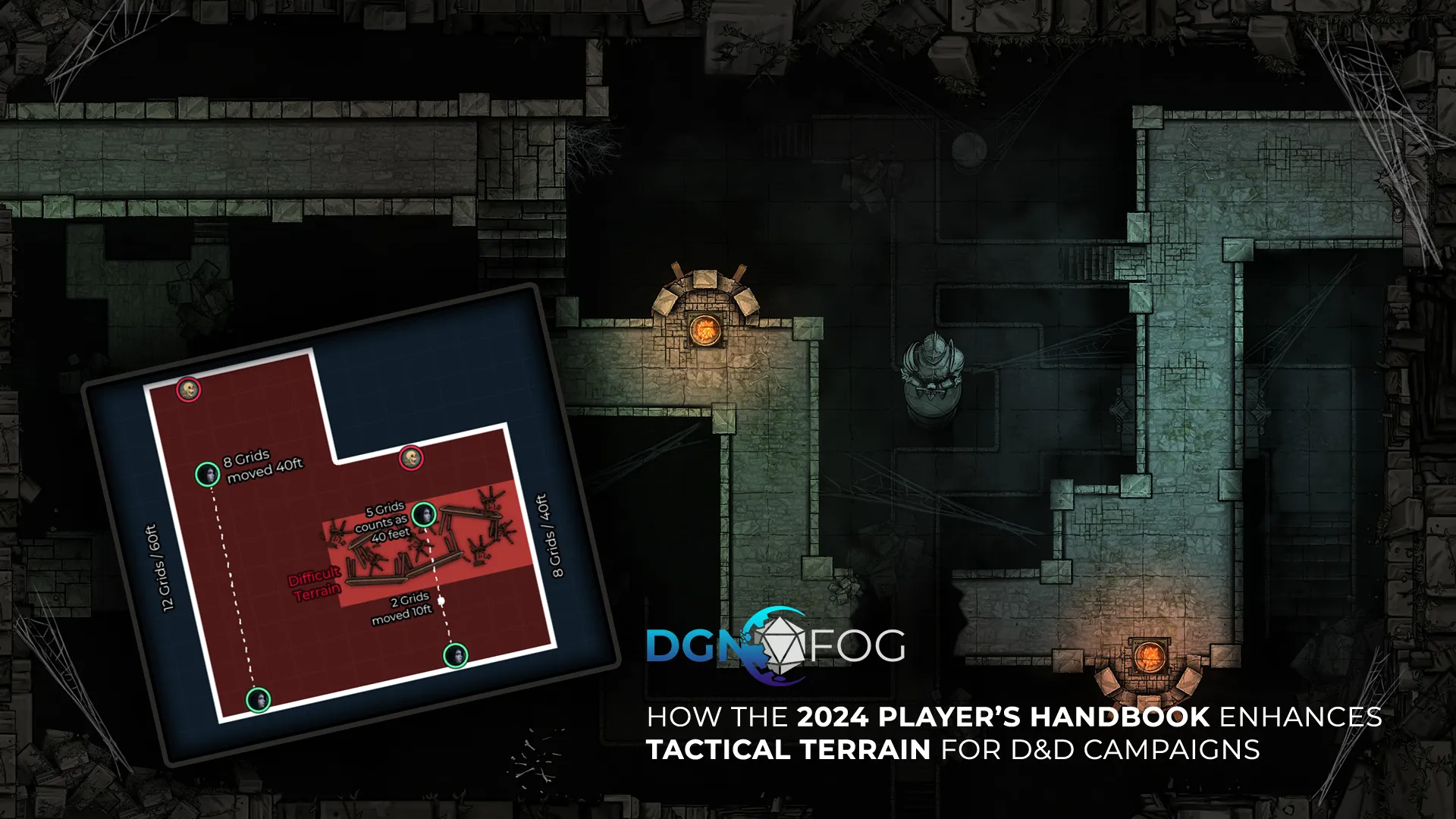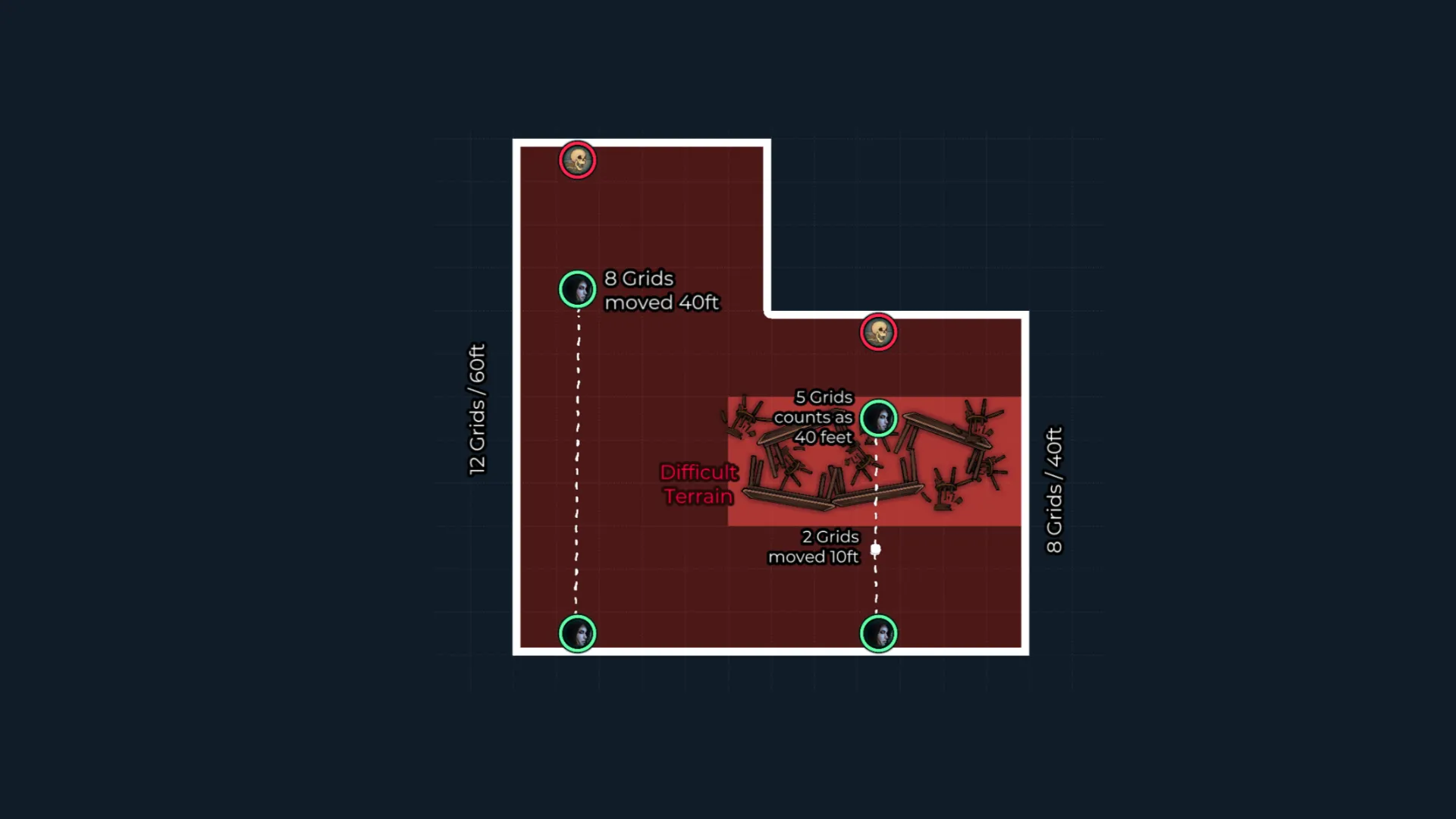1. Using Varied Terrain for Tactical Play
By incorporating vertical elements like cliffs, towers, or multi-floor buildings, we can create layers of strategic depth. With new action economy mechanics, players have more freedom to consider their positioning, so multi-level terrain allows them to maximize line-of-sight advantages, take cover, or reach high-ground vantage points. This setup not only enriches combat but also encourages diverse character movement and interaction within the space.
With weapon mastery properties granting unique effects (like allowing a flail to “Sap” an opponent), map design can intentionally support these abilities. Narrow corridors, rocky outcrops, and strategically placed cover allow different weapons to shine, encouraging players to adapt their strategy based on available terrain. This approach turns terrain into an ally, letting players fully experience the distinct properties of each weapon in combat.
With new, more versatile movement options, designing maps with rivers, pits, and rocky areas rewards creative navigation and movement-based skills. By including zones where climbing, jumping, or even flying grant distinct advantages, we create a dynamic battlefield that encourages characters to make full use of their unique movement abilities.



